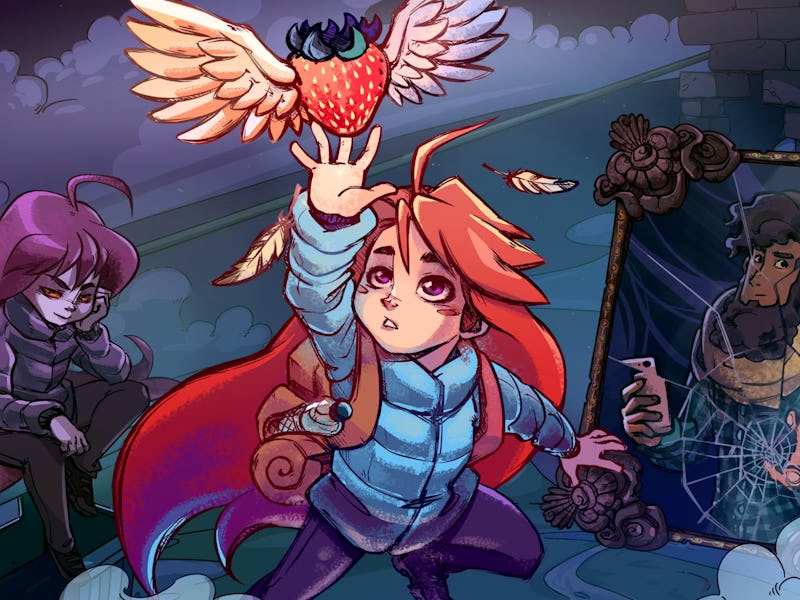GLAAD Report Confirms I Was Right To Feel Let Down By Gaming As A Trans Player
Survey shows representation lags behind growing numbers of LGBTQ players.

The number of video games featuring LGBTQ characters lags far behind the number of actual LGBTQ players, according to a new report from GLAAD. That figure probably isn’t too surprising if, like me, you’re one of the queer players the report discusses, but GLAAD’s first-of-its-kind survey puts solid numbers behind what was previously just a feeling. The 2024 GLAAD Gaming Report offers context for why that representation gap matters and some ways that gaming could do better by a huge part of its audience.
According to the annual report, 17 percent of players identify as LGBTQ, but just two percent of games listed on digital storefronts have LGBTQ characters or storylines. That’s particularly disappointing when it’s paired with data on how important representation is to survey respondents. Most LGBTQ players (68 percent) say they wish there were more prominent queer storylines in games, and 72 percent say seeing their gender identity or sexual orientation represented makes them feel better about themselves.
Queer storylines are still few and far between in gaming
I can say for certain that that’s true for me. As a trans woman, I have precious few opportunities to play a game that even features someone like me, let alone one with a trans protagonist. That’s why, when Apex Legends introduced Catalyst, the first trans woman in the game, I jumped at the chance to play as her. I don’t like most competitive shooters (GLAAD’s survey shows LGBTQ players have a slight preference for co-op over competitive games, which is reversed for non-LGBTQ players) and I can’t say I contributed much to my team in the few rounds I played. But despite never coming close to winning a match, I felt empowered by the chance to play as a strong trans woman, especially since Catalyst is voiced and partially designed by trans women.
Part of the aversion to competitive games may come from the fear of being harassed. The fear of harassment has kept 42 percent of LGBTQ games from playing certain games, and 27 have quit due to harassment.
In GLAAD’s survey, 53 percent of respondents said the ability to play as a character of their own gender makes them more likely to play a game at all. That reflects my experience, too, and I suspect it’s even more of a priority for trans players than cisgender queer players. Just as my short stint playing Catalyst made me feel like I was embodying a part of myself in the game, being forced into a male role always leaves me feeling disconnected and a little uneasy.
Apex Legends’ Catalyst is still a rare example of a trans game character done right.
I came out as trans in my mid-30s, quite a bit older than the average queer gamer in GLAAD’s survey. According to GLAAD, most LGBTQ players are 13 to 17 years old (28 percent of respondents), with the 18 to 24 range and 25 to 34 range accounting for 24 percent and 23 percent, respectively.
If I had known who I was in my teens, the only form of representation for trans women would have been in the form of cruel jokes, which still haunt gaming today. But the odd feeling of delight I got playing as Samus Aran or Lara Croft, which I wouldn’t understand for decades, still made Metroid and Tomb Raider some of my favorite games growing up. That puts me squarely with the 74 percent of GLAAD respondents who said they can express their true selves while gaming.
As the survey points out, it’s coming at a time of an unprecedented anti-LGBTQ legislation push in the United States, particularly aimed at dismantling trans rights. GLAAD found that while a majority of LGBTQ gamers say they use games to get through tough times and express themselves in ways they can’t in the real world, far more respondents in states with anti-LGBTQ legislation felt that way.
Based on its findings, GLAAD recommends that game developers should increase LGBTQ visibility across all genres, but there’s even more they can do. Representation doesn’t just mean including queer characters, it means finding new stories to tell about them that are authentic and meaningful. GLAAD says developers should also give thought to how to make the communities around their games more queer-friendly. Finally, it suggests that more leadership roles at studios should be filled by LGBTQ people, who are better equipped to understand and advocate for players with similar identities.
Even competitive games with relatively diverse casts and communities can be toxic for LGBTQ players.
It’s easy to feel unwanted as a queer person in gaming communities. Aside from the lack of representation, many games that do feature LGBTQ characters are bombarded by hate in the form of review bombing, nasty comments on social media, and even threats against game developers. But the GLAAD survey shows only 30 percent of non-LGBTQ players would be less likely to play a game with a trans main character, which drops to 20 percent for games with an optional main character, and the figures are even smaller for games with other LGBTQ identities.
That still doesn’t feel great as a trans person! But it does suggest that the chorus of bigoted comments that seem to surround every aspect of queer gaming are coming from a relatively small number of loudmouths. As GLAAD report shows, LGBTQ representation still has a long way to go. Along with the lack of queer people in leadership positions, one reason developers shy away from LGBTQ content may be fear from studio heads that it will scare players away. But data showing the massive impact of representation for queer players compared to little opposition to it may be the push that developers need to start making gaming the inclusive space it should be for marginalized players.